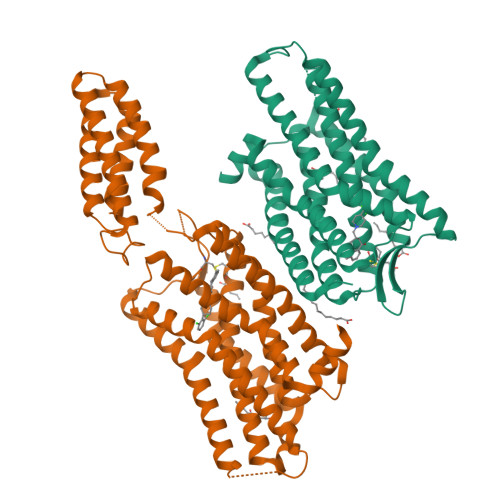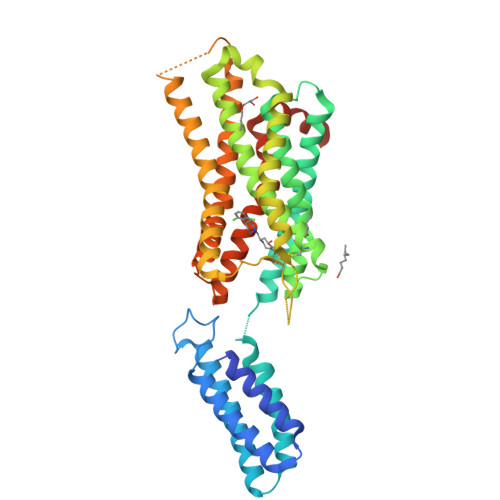The Importance of Ligand-Receptor Conformational Pairs in Stabilization: Spotlight on the N/OFQ G Protein-Coupled Receptor.
Miller, R.L., Thompson, A.A., Trapella, C., Guerrini, R., Malfacini, D., Patel, N., Han, G.W., Cherezov, V., Calo, G., Katritch, V., Stevens, R.C.(2015) Structure 23: 2291-2299
- PubMed: 26526853
- DOI: https://doi.org/10.1016/j.str.2015.07.024
- Primary Citation of Related Structures:
5DHG, 5DHH - PubMed Abstract:
Understanding the mechanism by which ligands affect receptor conformational equilibria is key in accelerating membrane protein structural biology. In the case of G protein-coupled receptors (GPCRs), we currently pursue a brute-force approach for identifying ligands that stabilize receptors and facilitate crystallogenesis. The nociceptin/orphanin FQ peptide receptor (NOP) is a member of the opioid receptor subfamily of GPCRs for which many structurally diverse ligands are available for screening. We observed that antagonist potency is correlated with a ligand's ability to induce receptor stability (Tm) and crystallogenesis. Using this screening strategy, we solved two structures of NOP in complex with top candidate ligands SB-612111 and C-35. Docking studies indicate that while potent, stabilizing antagonists strongly favor a single binding orientation, less potent ligands can adopt multiple binding modes, contributing to their low Tm values. These results suggest a mechanism for ligand-aided crystallogenesis whereby potent antagonists stabilize a single ligand-receptor conformational pair.
Organizational Affiliation:
Department of Integrative Structural and Computational Biology, The Scripps Research Institute, La Jolla, CA 92037, USA.





















